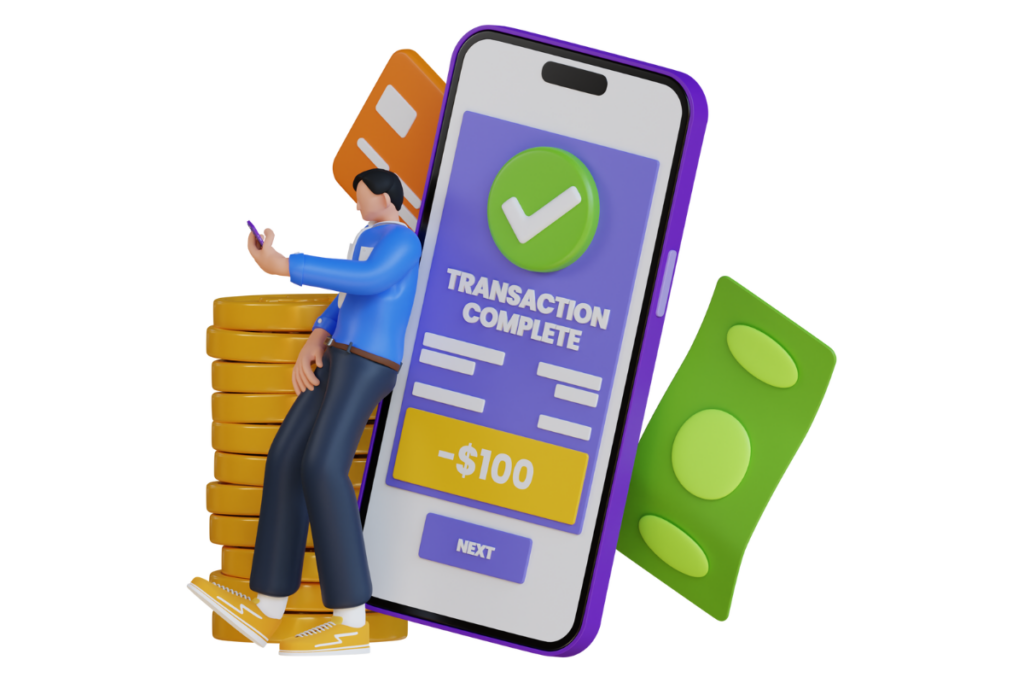Apart from managing the emotional stress, getting your money back after a rental scam should be the priority. Unfortunately, we cannot say with certainty whether you will succeed as it depends on the circumstances of the case on hand. This guide is designed to clearly outline how the whole process works and how exactly renter scam victims should go about getting a refund.
Will victims of rent scams get refunded by their bank?
Yes and no. The likelihood of refund depends on a range of factors however the first and most crucial relates to the method of payment. This is key as it will determine the likelihood of success and the degree of protection available. Methods of payments include but are not limited to the following:
- Bank transfer
- Debit or Credit card
- Paypal
- Cash, vouchers or gift cards
- Money transfer wire service
- Peer to peer payment platform – Revolut etc.
For this article, we are going to focus on the most common type of rental scam payment method which is a bank transfer. Each separate payment method would require an explanatory article in itself due to the complexity of the multijurisdictional international banking and payments network. Let’s focus therefore on the most prevalent rent scam payment method – the traditional bank transfer.

Why is a bank transfer the most likely payment method for rental scams?
A bank transfer is the most likely payment method for property rentals as small private landlords would typically not have the payment processing infrastructure in place to accept Debit or Credit cards etc. Alternative payment methods are typically only available to consumers via online ecommerce or through professional property operators. Credit and debit cards also offer much greater protection (recharge ability etc.) to renters and rent scammers would not typically request card payment as a result.
What is an authorised push payment (APP) bank transfer?
Bank transfer scams are classified, at a high level, as either authorised or non-authorised. Authorised push payments (APP) are bank transfer payments that individuals make themselves, usually using online banking websites or apps. APP fraud occurs when a victim is duped into authorising a payment to a fraudster, believing it to be a legitimate transaction. The victim willingly initiates the transfer, often due to manipulation, deception, or impersonation by the fraudster. This is more prevalent than non-authorised payment fraud which occurs without the victim’s knowledge or consent. In this type of fraud, the fraudster gains unauthorised access to the victim’s bank account or initiates transactions without the victim’s permission.

How do bank transfers work?
To understand how one might reverse or stop a bank transfer, it’s helpful to understand the component part of a bank transfer from a banking infrastructure perspective. Here’s a simplified explanation of how bank transfers generally work:
- Initiation: The sender (also known as the payer or remitter) initiates the bank transfer. This can be done through various channels, including online banking, mobile banking apps, or by visiting a physical bank branch.
- Account details: The sender provides the necessary information to initiate the transfer, which typically includes the recipient’s bank account number, the name of the account holder, the recipient bank’s name and location, and the transfer amount.
- Authorization: The sender’s bank (also known as the originating bank) verifies that the sender has sufficient funds in their account to cover the transfer amount. If the funds are available, the sender’s bank authorizes the transfer.
- Routing: The originating bank sends the transfer request to a clearing system or a network, such as a payment gateway or an Automated Clearing House (ACH). The clearing system acts as an intermediary between the originating bank and the recipient bank.
- Interbank processing: The clearing system routes the transfer request to the recipient bank based on the provided account details. The recipient bank receives the request and verifies the account information.
- Fund transfer: Once the recipient bank validates the transfer request, it credits the recipient’s account with the transferred funds. The recipient can now access and use the funds.
- Confirmation: Both the sender and the recipient receive a confirmation of the transfer, either through an electronic notification or a bank statement. This confirmation serves as a record of the transaction.
It’s important to note that the exact process and time taken for a bank transfer may vary depending on factors such as the individual banks involved, the type of transfer (domestic or international), the transfer method (wire transfer, ACH, etc.), and any intermediate clearing systems used.

So what’s the most important thing to do if you fall victim to a bank transfer fraud?
The most important thing that a renter should do is to report the suspected scam to their bank as soon as possible. Timing is critical as banks typically only have a narrow window of time to stop or recall a payment before the recipient accesses and withdraws the funds. You should provide the bank with as much information as possible from the outset including the recipient’s name on account, account number etc. Stopping the actual transfer of funds is the only guaranteed way of protecting your funds. As outlined above, bank transfers are quite cumbersome and can be quite slow, especially if transferring to an international bank. Rent scam victims therefore have a window of opportunity to stop the fraud.
Rent scam victims should also contact the recipient’s bank – it may be possible for them to stop the transfer and return your funds. You can determine which bank the funds were sent to by looking at the receiving bank’s sort code – each bank has a different sort code which can be easily identified online.
Exactly how long you have depends on a range of factors – we have outlined the relevant factors and likely timing of bank transfers below depending on whether it is a domestic or international bank transfer.

How long does a typical domestic bank transfer take?
The window of time is much tighter for domestic transfers ranging from instant transfer to possibly 3 days. The duration of a typical domestic bank transfer can vary depending on several factors, including the banks involved, the transfer method, and the processing policies of the financial institutions. Here are some general guidelines for different types of domestic bank transfers:
- Same-Bank Transfers: If both the sender and the recipient have accounts at the same bank, transfers are often processed and completed almost instantly. The funds are typically available in the recipient’s account immediately.
- Internal Transfers: When the sender and the recipient have accounts at different branches of the same bank, transfers are usually processed within the same business day or within a few hours. The funds are typically available to the recipient on the same day.
- ACH Transfers: Automated Clearing House (ACH) transfers are commonly used for non-urgent domestic transfers, such as bill payments or direct deposits. ACH transfers can take 1-3 business days to process. The exact duration depends on the timing of the transfer, as ACH transactions are usually processed in batches at specific intervals throughout the day.
It’s important to note that these timeframes are general estimates, and actual transfer times can vary. Factors such as weekends, holidays, cut-off times for processing, and any potential delays or verifications required by the banks can affect the overall transfer duration. To get accurate information about the processing times for domestic bank transfers, it’s best to contact your bank directly.
How long does an international bank transfer take?
Oftentimes, rent scammers will base themselves in a foreign jurisdiction requesting transfers to foreign bank accounts. It tends to be easier for them to access funds and evade law enforcement when using foreign bank accounts however it also gives the renter a slightly longer window to halt the payment.
The duration of international bank transfers can vary significantly depending on multiple factors, including the countries involved, the currencies used, the correspondent banks involved in the transfer process, and any regulatory requirements. Here are some general guidelines:
- Correspondent Banking Network: International bank transfers often involve multiple correspondent banks that facilitate the transfer between the sender’s bank and the recipient’s bank. The number of intermediary banks in the network and their efficiency in processing the transfer can impact the overall duration.
- Processing Time: International bank transfers can take anywhere from a few business days to a couple of weeks to be completed. The time is influenced by factors such as the cut-off times for processing transfers at each bank, the time needed for currency conversion, and any additional checks or verifications required by the banks or regulatory authorities.
- SWIFT Transfers: The most common method for international bank transfers is the Society for Worldwide Interbank Financial Telecommunication (SWIFT) network. SWIFT transfers typically take 1-5 business days, but the exact duration depends on various factors such as the participating banks, the destination country, and the currency being transferred.
- SEPA Transfers: For transfers within the Single Euro Payments Area (SEPA), which consists of 36 European countries, including the European Union member states, transfers are usually completed within 1-2 business days.
- Time Zone Differences and Weekends: The time zone differences between countries can affect the processing time of international transfers. Additionally, weekends and public holidays in either the sender’s or recipient’s country can cause delays, as banks may not process transfers during non-business days.
Again, these timeframes are general estimates, and the actual duration can vary based on the specific circumstances of the transfer.

Can I get refunded from an authorised push payment (APP) bank transfer fraud?
Research suggests that most rent scam victims do not cancel or halt bank transfers in time. This is because the rent scam is only detected when the renter tries to move in on day one of their tenancy.
Rent scam victims are therefore left in a scenario where they need to seek recourse and assistance from their financial institution in order to recoup funds. The Refunds for authorised push payment (APP) bank transfer fraud depend on several factors, including the circumstances of the fraud and the policies of your bank or financial institution. While it’s not possible to provide a definitive answer, here are the key considerations:
- Timely Reporting: It is crucial to report the fraud to your bank as soon as you discover it. Many banks have specific time limits within which you must report the fraud to be considered for reimbursement. Prompt reporting increases the chances of a positive outcome.
- Bank Investigation: Once you report the fraud, your bank will conduct an investigation to assess the circumstances surrounding the unauthorized transfer. They will consider factors such as your account history, any security measures you had in place, and any potential negligence on your part.
- Negligence and Care: Whether or not you are reimbursed may depend on whether you took reasonable care to protect yourself against fraud. If your bank determines that you were negligent, such as sharing sensitive information or failing to follow security procedures, they may deny reimbursement.
- Regulatory Protection: Some jurisdictions have regulations in place to protect consumers from certain types of fraud. These regulations may provide additional avenues for reimbursement or dispute resolution.
- Contingent Reimbursement Model: In the United Kingdom, for example, the Contingent Reimbursement Model (CRM) was introduced in May 2019. Under the CRM, victims of certain types of APP fraud may be eligible for reimbursement from their bank, provided they meet certain criteria and have taken reasonable care to protect themselves. The equivalent model does not exist in Ireland unfortunately.

It’s important to note that reimbursement policies can vary between banks and jurisdictions, so it is essential to review the specific policies and terms of your bank or financial institution. Contact your bank’s fraud department or customer service to discuss the details of your situation and inquire about the possibility of reimbursement. AIB, Bank of Ireland and PTSB all disclose their policy online.
If you are not satisfied with the response from your bank, you may also consider seeking advice from a consumer protection agency or legal counsel to explore your options further.
The Financial Services and Pensions Ombudsman (FSPO) in Ireland deal with complaints regarding financial service providers. You can phone the PSPO on +353 1 567 7000 or email them at info@fspo.ie for assistance.
Concluding remarks
While the payment service directive, PSD2, set out the industry requirements concerning liabilities for unauthorised payment transactions and the applicable security requirements to help protect consumers against fraud, there is no requirement for payment services providers to compensate customers where authorised push payment fraud occurs. Rules requiring reimbursement from Irish payment service providers to victims of authorised push payment fraud would require the introduction of domestic legislation. PSD2 is a maximum harmonisation directive, member states may not maintain or introduce provisions through the European Union payment services regulations other than those laid down in the directive, including the introduction of provisions to require reimbursement from payment service providers to victims of authorised push payment fraud.
The Irish Minister for Finance, Micheal McGrath stated in a Dáil Debate that “the introduction of domestic legislation requiring reimbursement from payment service providers to victims of authorised push payment fraud could lead to unintended consequences and introduce impediments into the payment system causing roadblocks for ordinary users. While preventing fraud is a priority, it is important that any action taken to solve the issue must be considered within the wider European context.” There therefore appears to be little political appetite in Ireland for the introduction of compensation requirements in the absence of European Commission direction.
For more information or support regarding rent scams, we recommend contacting Secureprop.com who specialise in online property scam prevention services and support.
